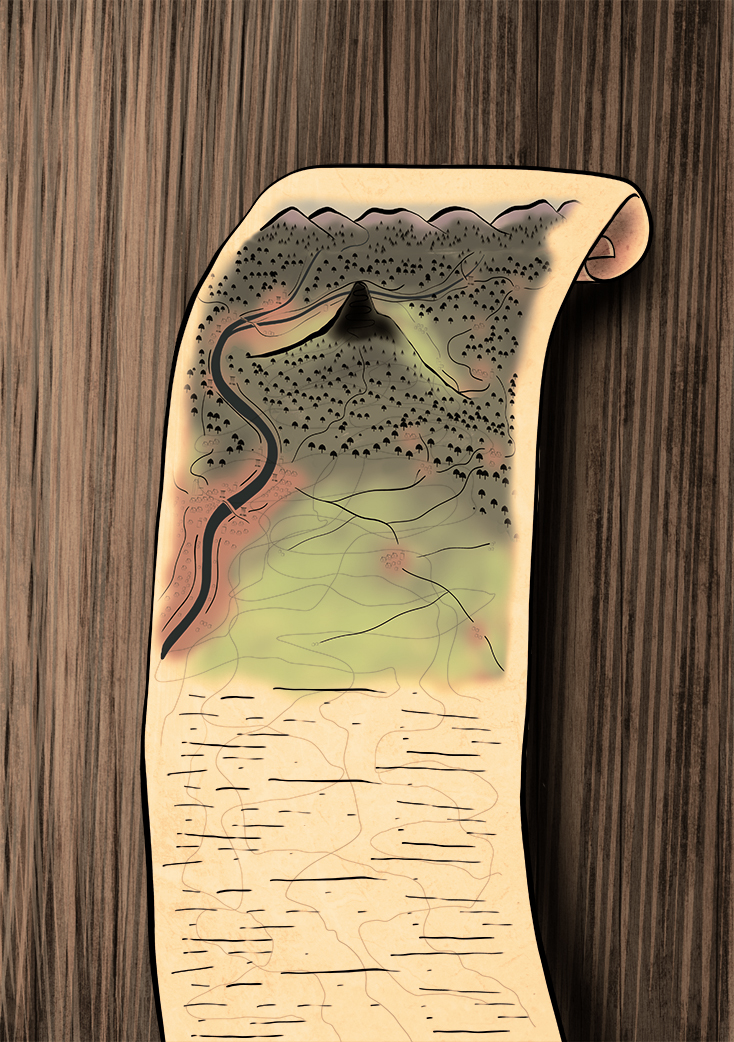Dragon Maps
I thought the map was strange. Yes, a map of the Glass Volcano and the surrounding landscape was drawn at the top, but a poem, not a legend, filled the bottom. And why, in a document written in Archaic Daione, did the scholar use High Catak names?
Dragon Maps
All artwork by Shade Melodique
unless otherwise stated
featured image: biletskiy, Envato
unless otherwise stated
featured image: biletskiy, Envato
Trin
Yes, I'm starting with Trin. He books my father's translation work, so I've known him since I was a little girl. He's sharp and knowledgeable when it comes to ancient works, but when it comes to social interactions, he's a bit clueless. Anyway, he was a bookseller in Iova, capital of Soline (now a bookseller in Tindrel, a city in Merren). He had made a name for himself selling rare documents, manuscripts, books, and the like, and since he was my father's broker, he acquired a lot of work from the Iovan palace school. The first dragon map was one such acquisition. My father had not returned the last job Trin sent him, and since he needed the translation done quickly, he gave the document to me. My first look pricked my curiosity. The title was Kandari, or Flame Stone. That's High Catak. The rest of the poem, except for the names, was in Archaic Daione. It seemed so odd, to have that combination.The Odd Map
Why did I find that odd? A few reasons. The author used Dyondia and Mondomon to refer to Eserial and Imperion. In some ways calling them 'Mistress Death' and 'Lord Demon' makes sense, since many aki n'di ori saw them as the destroyers of Ay a di galay and their culture. They were insult monikers that most Jonna Empire Condi would not understand, because they refused to learn Catak. But the poem itself praised Eserial, Imperion, and Kykini Cede for successfully destroying the Ri a mira, an important temple in Ay a di galay. The aki n'di ori decided the sylfaodolon had turned from them, and King Tokindi saw no option but to bow before Kykini Cede's might--and capitulate to King Giarel. That surrender began the Jonna Empire. I wondered who the map was for. The illustration looked accurate, but seemed pointless when a poem rather than a reference sat below it. And there were all these squiggles running from the mountain into the words. What were those? Who was this map for? I decided a scholar must have used the work to brag about his language skills, but something still seemed off about it, concidering how far ouside map conventions it was. The Condi, if nothing else, are harshly conventional.
Well, yes, I took the job. I needed the money, and when it comes to translating Archaic Daione, I'm as good as my father. As long as Trin put my father's stamp alongside my name, the people assumed he checked my work and everything was as it should be.
No, he didn't. Trin trusted me. And I never gave him a reason to doubt me.
I took the map home to translate. And it got stranger from there. Someone was using First Eahione sentence structures and symbols, some of which I'd never seen before. Why put First Eahione in an Archaic Daione document? It was a daughter language, and had already split from Temple Daione by the time High Catak was spoken. It was as if the author was attempting to hide something.
And the squiggles bothered me. I came to the conclusion that they were pathways inside the lair. Quite the find, as the dragonpriests kept those secret.
I knew the map would intrigue my father, and I wanted a copy, so made two with archival powder and paper and gave it back to Trin along with the translation.









Comments